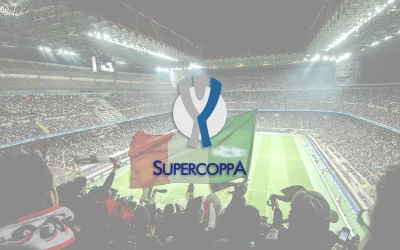Reiza Dejito stunned the judges with her heartfelt exploration and tale of one of the oldest tribal tattooists in the Philippines in Kalinga. She was awarded the Grand Prize of Wego’s Life-Changing Travel Story campaign winning her Php100,000 and two return tickets to anywhere in the Philippines from Cebu Pacific. You can learn and read more from Reiza at her blog, Wander if you must!
As the sun peeps through the mountains, piercing the early-morning fog, the entire village of Buscalan wakes up. I force my beaten body to rise and greet the day like any villager would—a cup of freshly brewed coffee and a quick chat with the folks and children who came to see the “visitors.” The aroma rouses me from my half-slumber.
I see her approaching, carefully adjusting her head scarf, her baggy jeans and shirt complementing the colorful heirlooms around her neck and wrists. She walks as if the wind is carrying her, a youthful lightness in her steps. She has a timid smile, almost mysterious with a hint of cheekiness. She says something in her dialect and everybody laughs. Everyone around her seems infected by her enthusiasm!
I cannot contain myself. I hold her fragile hands in mine in a sort-of handshake. I gaze into her eyes. They are clear and quiet, like the sky after a thunderstorm. I inspect her arms, shoulders, her neck, decorated with patterns steeped in history and tradition of the Kalinga people. Known to be fierce headhunters in the past, the Kalingas believed tattoos protected their warriors from enemies. For women, the artistry was not only a symbol of beauty and fertility, it was also a sign of strength—for the weak can never submit to such agony of being pierced for days on end.
“You are beautiful,” I mutter under my breath, in awe.
I still can’t believe I am here, standing in front of the legendary Fang-od, the oldest (and hopefully not the last) tribal tattooist in that part of Kalinga. Having lived through and seen pain, she looks young for her age of ninety-three years. Her petite figure still upright, her hands steady, her eyes – I’ll speak of them again – her eyes are as clear as summer day, save for the cloudiness that passes for a fleeting moment when she talks about her long-lost love.
Francis, our guide, fills us in with Fang-od’s love story. When she was in her early twenties, she fell deeply in love with a man from her village. As fate would have it, he perished, leaving her broken hearted and single for the rest of her life.
As if reading my mind, Francis adds, “Sometimes, we meet people in our life that aren’t meant to be, but it doesn’t mean we stop loving them. They come to our lives for a certain purpose. Maybe to make us feel the pain so we become stronger.”
Maybe pain and loss do make us strong. And by thinking some things are temporary, one learns to seize the moment, to take chances.
So here I am, 500 miles from my home in Cebu, braving bumpy flights, uncomfortable bus rides, dare-devil jeepney toploading along winding roads and deep ravines, scaling steep slopes, fighting altitude sickness, enduring the morning chill that seeps to the bones. Here I am, in a remote village—to get inked. Maybe to take my chances. To get wounded, to be healed, to reaffirm my person, to feel alive.
“Apo is asking if you have a design in mind,” Francis translates. Fang-od only speaks her dialect, despite the mobs of tourists from the Philippines and all over the world. She communicates through her smile and her gracious demeanor.
“I want something unique, personal, to express my individuality.”
I eagerly show Fang-od my machine-inked tattoo on my lower back. The tribal yin-yang design I was so proud of. She scrutinizes it and chuckles. I hope it is of amusement than anything else.
The truth is, I spent half of the night browsing through the three books written about Fang-od and tribal tattoos. I knew I wanted it just above my ankles, but I couldn’t make up my mind about the design until I met Fang-od.
I finally opt for a fern design—a symbol of fertility and woman power. The fronds grow downward as a reminder to keep me grounded. It will be on my left leg to be in touch with my femininity. It is to cover only half of the circumference of my leg because I want room for growth and something new. And why just above the ankles? Oh well, I (and some people) find it sexy. Ehem!
From the smile on her face, I reckon Fang-od is pleased with my chosen design. She carefully prepares the citrus thorn and fixes it on the wooden “handle.” She then rubs off black soot from a used pot and mixes it with clear water.
She dips a thin blade of grass in the soot-water mixture and draws the design on my skin with it.And the tapping begins. Her hands move in rhythm, like bobbing to the beat of a tribal dance, the sound of wood tapping against wood becomes the music.
The melody has a hypnotic quality. It takes me into a trance. I am present at the moment, yet I feel detached. I sense each prick, as I watch blood and ink blend into a crimson black. My head spins. I shudder at every stab, close my eyes in resignation. Yet amidst the whirlwind of sensations, it is as if my soul disengaged from my body. I am looking at myself—wonderfully vulnerable, raw.
Pain, like death, is one great teacher. It takes you back to the past. Submitting yourself to it is like a cathartic ritual of letting go. The wounds will heal and scar, and it is up to you to accept and live with the blemishes. Only then can you truly move on.
An hour passes. Fang-od makes the final touches to her masterpiece. I love it. Unlike machine-made tattoos, it is rough around the edges. Imperfect. Just like me.
I look at it, in all it’s swollen glory, and feel a deep sense of pride. Slightly damaged, inflamed, bruised, I see a stronger version of myself.
Like the elderly women of Kalinga, I am scarred, but I am beautiful.
Images courtesy of Rieza Dijeto
















